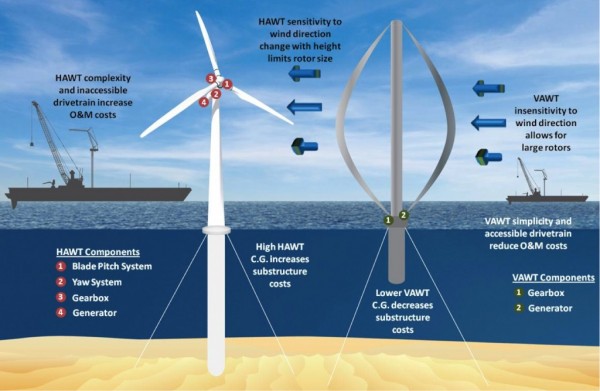Innovative Offshore Vertical-Axis Wind Turbine Rotors
The Innovative Offshore Vertical-Axis Wind Turbine Rotors project seeks to advance large offshore vertical-axis wind turbine rotor technology from concept to lab-scale prototype stage through four major research thrusts:

- innovative aeroelastic rotor conceptual design
- deep-water system design and cost analysis
- rotor material and manufacturing strategies
- subscale rotor prototype design and testing
The overarching project objective is to investigate the feasibility of the VAWT architecture for very large-scale deployment in the offshore environment. The most critical barrier to offshore wind is the high cost of energy and it is specifically targeted with the overall goal of achieving a 20% reduction in COE by applying VAWT rotor technology. We will work to achieve this goal by:
- developing innovative VAWT rotor designs that enable reliable, cost-effective, and easily manufactured rotors for deep-water offshore machines at the 10–20 MW scale
- demonstrating the potential for greater than 20% reduction in COE for a deep-water, floating VAWT system compared to current shallow-water horizontal-axis wind turbine systems
- developing manufacturing techniques, certification test methods, and a commercialization plan for offshore VAWT rotors in order to accelerate deployment
- testing, using a wind tunnel and combined wind-wave tank, a proof-of-concept subscale, deep-water floating offshore wind turbine employing a VAWT rotor

An initial focus of research has been VAWT code development and code coupling and design studies for VAWT rotor and floating platform. The figure shows several rotor configurations that have been analyzed. In addition, Sandia has performed structural dynamics and resonance impact analyses to investigate the effect of different support structures and the number of blades on VAWT vibratory response and vibratory loading which are key design drivers. Future work includes plans for detailed system design studies and subscale testing.
Contact
Brandon Ennis
blennis@sandia.gov